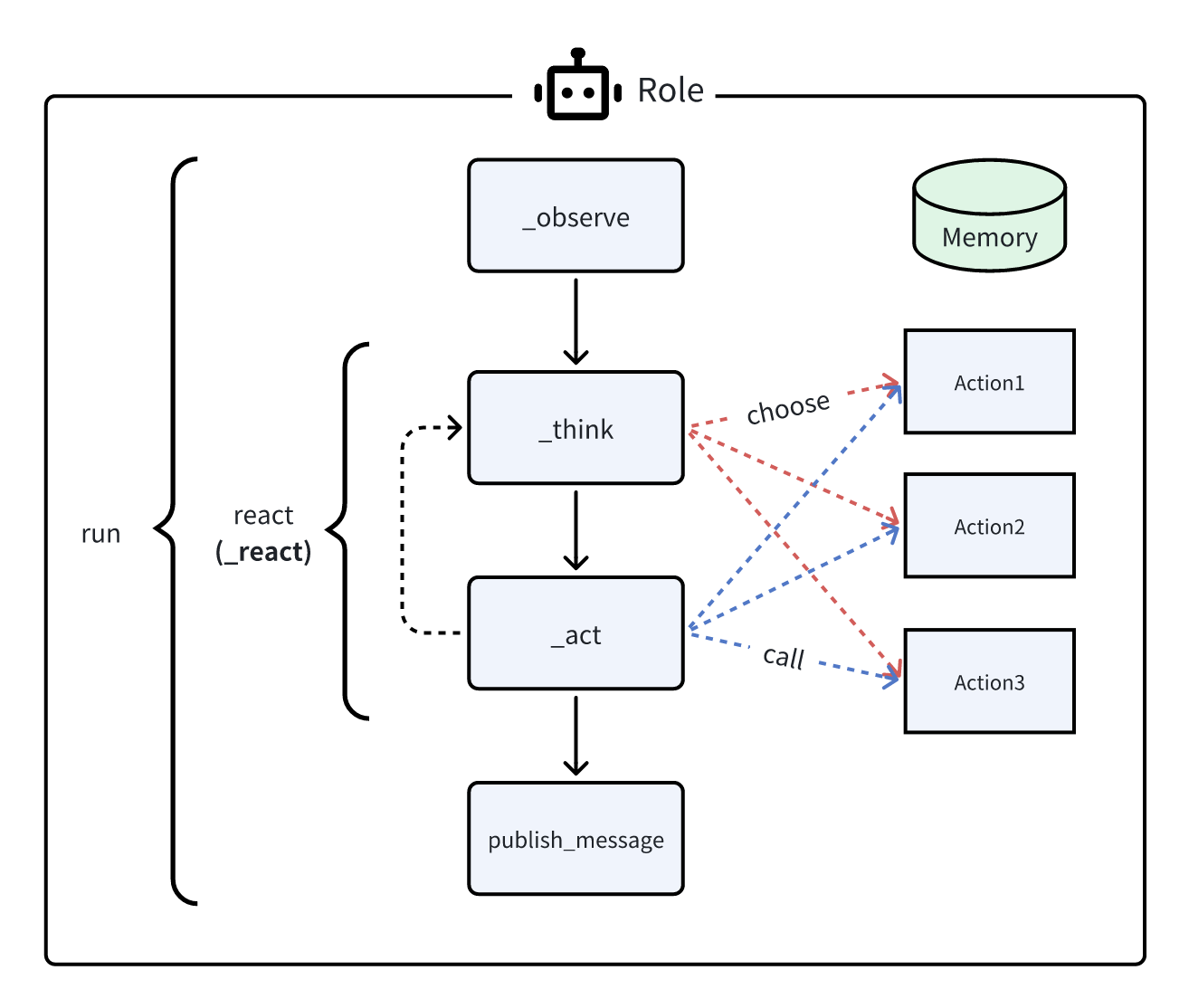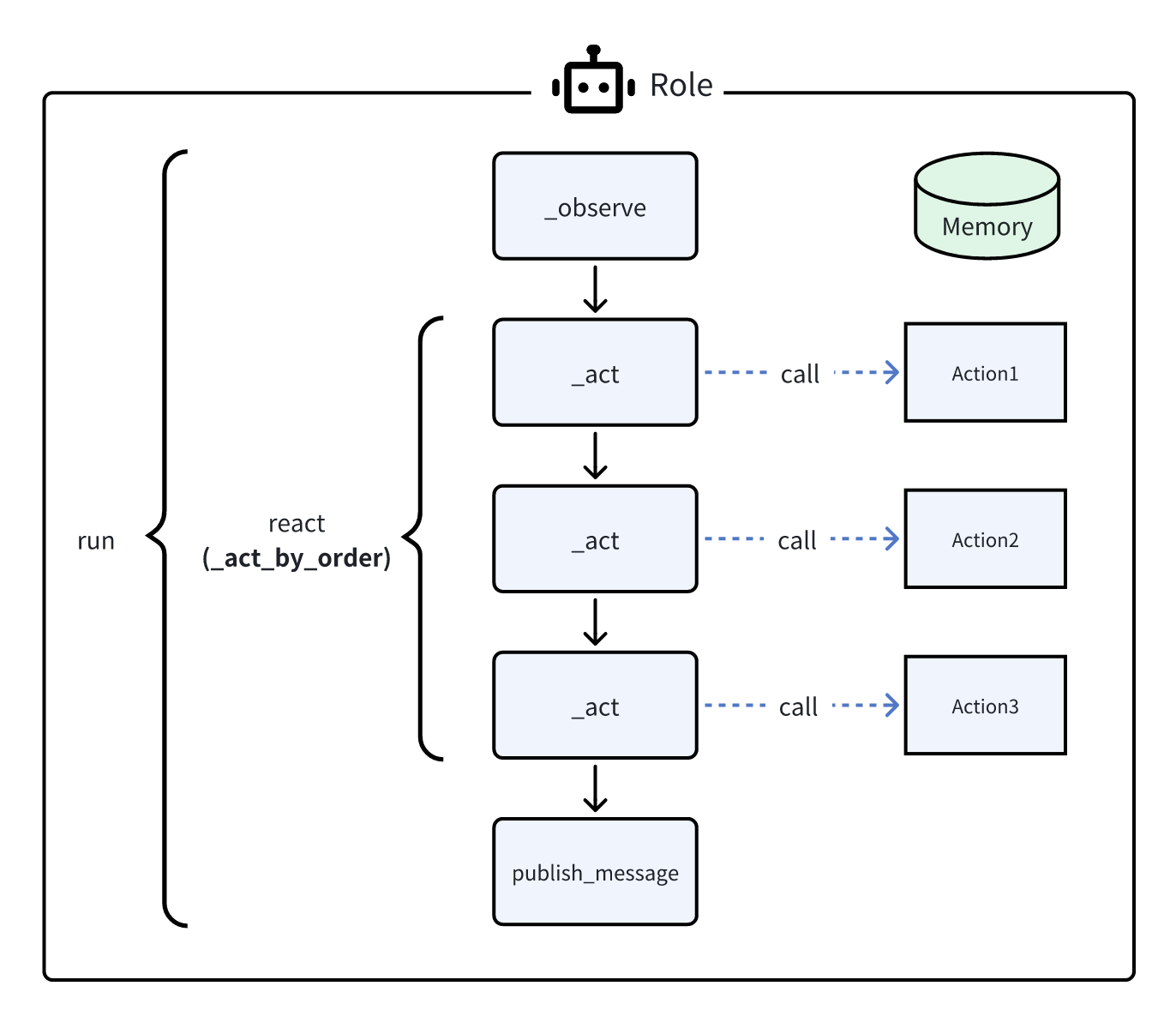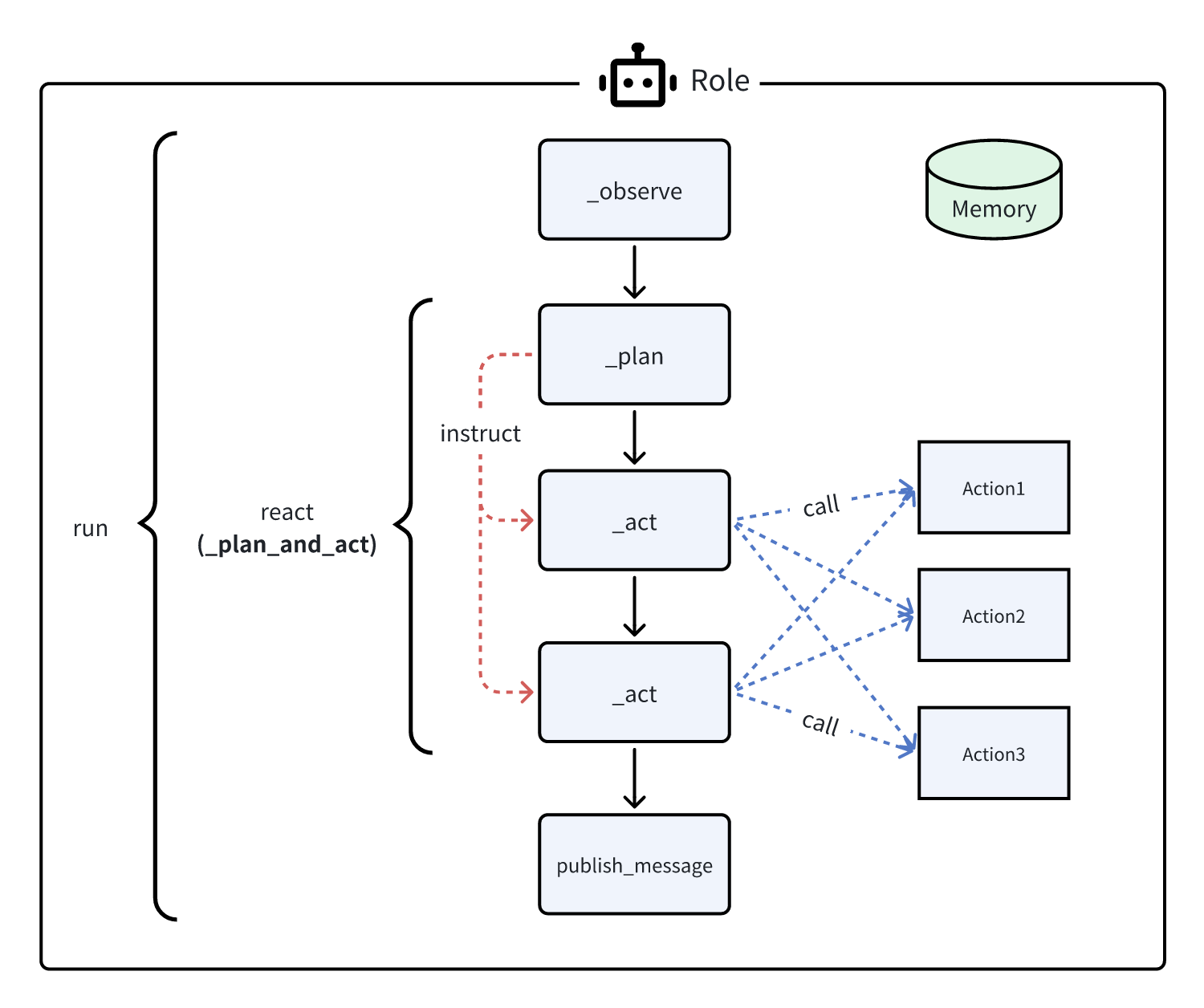Think and Act
After this tutorial, you will be able to:
- Understand how agent thinks and acts in an agent run and what each stage is used for
- Use different react modes according to your scenarios and need
Three react modes
After receiving new observation from the environment, an agent starts to "react" to the observation with proper thoughts and actions. The term "react" can be interpreted as "respond" or "reason and act". MetaGPT currently provides two ways to define such thinking and acting process, and will support one more through updates in the near future.
Standard ReAct (default)
Think first, then act, until the role thinks it is time to stop. This is the standard think-act loop in the ReAct paper, which alternates thinking and acting in task solving, i.e. _think -> _act -> _think -> _act -> ...
Each time during _think, Role will choose an Action to take in response to current observation, and run the chosen Action during _act stage. The action output will then be new observation used in _think again for a next step. We use LLM to select actions in _think dynamically, which equips this mode with good generability.

In MetaGPT, Role is set up with this mode by default with one think-act loop, so you don't have to specify anything. On the other hand, if you want the Role to perform more think-act loops. Use _set_react_mode during Role initialization. For example, the code below will allow 3 think-act loops (_think or _act each counts as one loop)
self._set_react_mode(react_mode="react", max_react_loop=6)self._set_react_mode(react_mode="react", max_react_loop=6)By order
Perform capable actions each time by order defined in set_actions, i.e. _act (Action1) -> _act (Action2) -> _act (Action3) -> ...
This mode is suitable for a deterministic SOP, where we know exactly what actions a Role should take and their order. With this mode, you only need to define the Actions and the framework will take over the pipeline building.

Recall our agent101 example, by specifying self._set_react_mode(react_mode="by_order"), the Role will take SimpleWriteCode first and SimpleRunCode next in its run.
class RunnableCoder(Role):
name: str = "Alice"
profile: str = "RunnableCoder"
def __init__(self, **kwargs):
super().__init__(**kwargs)
self.set_actions([SimpleWriteCode, SimpleRunCode])
self._set_react_mode(react_mode="by_order")
async def _act(self) -> Message:
...class RunnableCoder(Role):
name: str = "Alice"
profile: str = "RunnableCoder"
def __init__(self, **kwargs):
super().__init__(**kwargs)
self.set_actions([SimpleWriteCode, SimpleRunCode])
self._set_react_mode(react_mode="by_order")
async def _act(self) -> Message:
...Plan and act
Draft a plan in advance, then use the plan to instruct a series of actions, i.e. _plan -> _act -> _act -> ...

Implementing, stay tuned